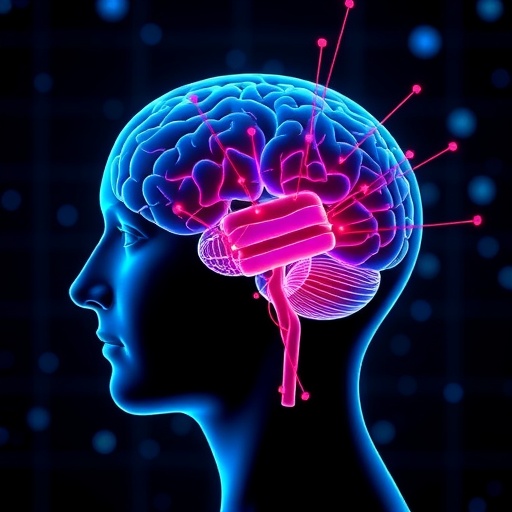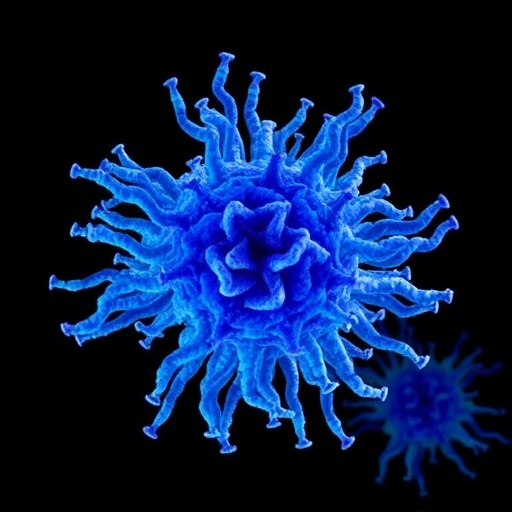In a groundbreaking advance that promises to revolutionize the treatment of Parkinson’s disease, researchers have unveiled a novel method to predict the optimal contacts for deep brain stimulation (DBS) therapy using real-time analysis of local field potentials (LFPs). This innovative approach, detailed in a recent study published in npj Parkinson’s Disease, addresses one of the most challenging aspects of DBS therapy: precise selection of stimulation contacts to maximize therapeutic benefit while minimizing side effects. By harnessing the brain’s own electrophysiological signatures, this method offers a personalized and dynamic pathway to optimize clinical outcomes in Parkinson’s patients.
Parkinson’s disease, a progressive neurodegenerative disorder, is characterized by debilitating motor symptoms such as tremors, rigidity, and bradykinesia. Deep brain stimulation has emerged as a transformative treatment modality, particularly for patients who no longer respond adequately to medication. The therapy involves surgically implanting electrodes into specific brain regions, commonly the subthalamic nucleus (STN) or the globus pallidus interna (GPi), and delivering electrical pulses to modulate abnormal neural activity. However, the efficacy of DBS is critically dependent on selecting the right contacts on the implanted electrode array for stimulation — a process traditionally reliant on time-consuming and subjective clinical programming sessions.
The innovation brought forth by Muller et al. stems from a sophisticated online algorithm that analyzes LFP signals recorded directly from the DBS electrode contacts themselves. LFPs represent aggregated synaptic activity and oscillatory patterns within localized brain circuits, providing a rich window into the pathophysiological state underlying Parkinsonian symptoms. By decoding these signals in real-time, the algorithm predicts which contacts will yield optimal therapeutic effects, essentially allowing the brain to inform the DBS programming process.
.adsslot_oZCtDd93Mz{ width:728px !important; height:90px !important; }
@media (max-width:1199px) { .adsslot_oZCtDd93Mz{ width:468px !important; height:60px !important; } }
@media (max-width:767px) { .adsslot_oZCtDd93Mz{ width:320px !important; height:50px !important; } }
ADVERTISEMENT
Central to this approach is the recognition that pathological beta oscillations (typically ranging from 13 to 30 Hz), which are exaggerated synchronizations observed in the basal ganglia circuits of Parkinson’s patients, serve as electrophysiological biomarkers of motor impairment. The research capitalized on the distinct LFP signatures recorded from different contacts within the implanted array, mapping these signals against clinical performance measures to establish predictive models. This correlation enables automated identification of contacts that show the greatest suppression of beta activity, which correlates strongly with symptom relief.
Employing a sophisticated machine learning framework, the team trained their predictive models on datasets collected from multiple patients undergoing DBS implantation. These models incorporate individual variability in brain anatomy and disease phenotype, permitting the algorithm to generalize across subjects while adapting to patient-specific neural dynamics. The online nature of the system means that as patients undergo DBS therapy, continuous electrophysiological feedback refines the prediction of optimal contacts, allowing dynamic recalibration of stimulation parameters to better match evolving clinical needs.
The implications of this technology extend deeply into clinical practice. Current DBS programming sessions can last several hours and require highly trained clinicians to interpret a complex mix of patient feedback and clinical testing. Automating contact selection based on intrinsic neural signals could substantially reduce programming times, increase patient comfort, and improve therapeutic precision. Furthermore, the technology paves the way for fully closed-loop DBS systems where therapy is continuously adjusted in real-time, potentially enhancing efficacy and reducing adverse effects.
The study further attests to the sensitivity and specificity of LFP-based predictions by comparing the algorithm’s suggested contact sites with those identified by expert clinicians. The striking concordance between the two underscores the potential reproducibility and reliability of the approach. Moreover, in some cases, the algorithm proposed alternative contacts that yielded improved motor outcomes in blinded assessments, highlighting its capacity to transcend conventional programming limitations.
Technically, the procedure integrates seamlessly with current DBS hardware, requiring no additional invasive interventions beyond the electrode implantation. The computational demands for real-time processing are modest, suggesting feasibility for implementation on embedded systems within implantable pulse generators. This compatibility ensures that advancements can be rapidly translated from research settings to patient care without necessitating extensive infrastructure modifications.
The authors also addressed key challenges such as artifact rejection and signal quality control, which are pivotal for robust LFP interpretation. Sophisticated filtering and signal processing pipelines were employed to isolate true neural signals from electrical noise and stimulation artifacts, thereby ensuring the accuracy of contact predictions. These methodical refinements are crucial for clinical acceptance and underscore the rigor of the research.
Beyond Parkinson’s disease, the methodology holds promise for other neurological disorders treated with DBS, such as dystonia, essential tremor, and obsessive-compulsive disorder. By establishing a blueprint for electrophysiologically informed programming, this framework could catalyze a new paradigm shift in neuromodulation therapies broadly, tailoring interventions in a more responsive and personalized manner.
Furthermore, the approach may dramatically accelerate research by enabling rapid assessment of stimulation effects across multiple contacts during intraoperative and postoperative periods. This could facilitate exploration of novel stimulation targets and patterns, potentially expanding the therapeutic repertoire for movement and psychiatric disorders alike.
Importantly, ethical considerations surrounding algorithmic decision-making in clinical contexts were thoughtfully considered. The system is designed to augment rather than replace clinician expertise, providing data-driven recommendations that clinicians can interpret alongside patient-specific factors. Such a hybrid model harmonizes technological innovation with human judgment, preserving patient safety and personalized care.
The development also opens avenues for integrating multimodal data streams, including kinematic assessments and neuroimaging, to further enhance prediction accuracy and therapy optimization. Combining electrophysiological insights with behavioral readouts could empower comprehensive, adaptive closed-loop neurostimulation systems, pushing the boundaries of precision medicine in neurology.
In conclusion, the online prediction of DBS contacts from LFP signals ushers in a transformative era for Parkinson’s disease management. By leveraging the brain’s own electrophysiological language, this method transcends traditional trial-and-error approaches to achieve rapid, accurate, and individualized therapy programming. As the technology matures and integrates within clinical workflows, patients worldwide stand to benefit from enhanced symptom control, reduced side effects, and improved quality of life—all hallmark desires in the battle against Parkinson’s disease.
Subject of Research: Online prediction of optimal deep brain stimulation contacts using local field potentials in Parkinson’s disease
Article Title: Online prediction of optimal deep brain stimulation contacts from local field potentials in Parkinson’s disease
Article References:
Muller, M., Scafa, S., Hanafi, I. et al. Online prediction of optimal deep brain stimulation contacts from local field potentials in Parkinson’s disease.
npj Parkinsons Dis. 11, 234 (2025). https://doi.org/10.1038/s41531-025-01092-y
Image Credits: AI Generated
Tags: deep brain stimulation therapyglobus pallidus interna DBSinnovative methods in neurosciencelocal field potentials analysismaximizing therapeutic benefit in DBSminimizing side effects of DBSneurodegenerative disorder managementParkinson’s disease treatment advancementspersonalized DBS for Parkinson’spredicting optimal stimulation contactsreal-time electrophysiological analysissubthalamic nucleus stimulation





